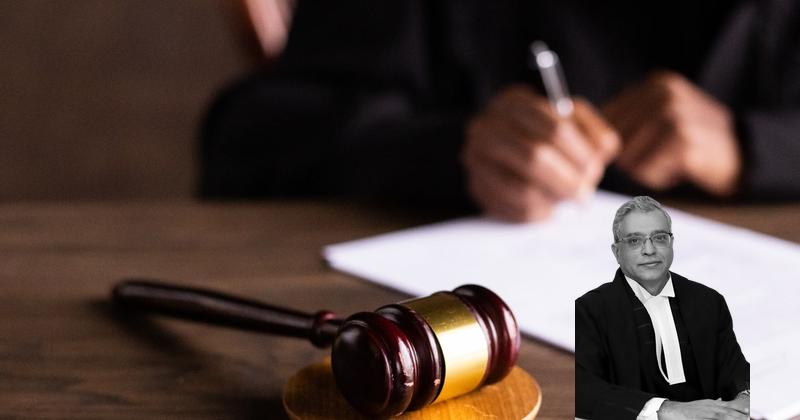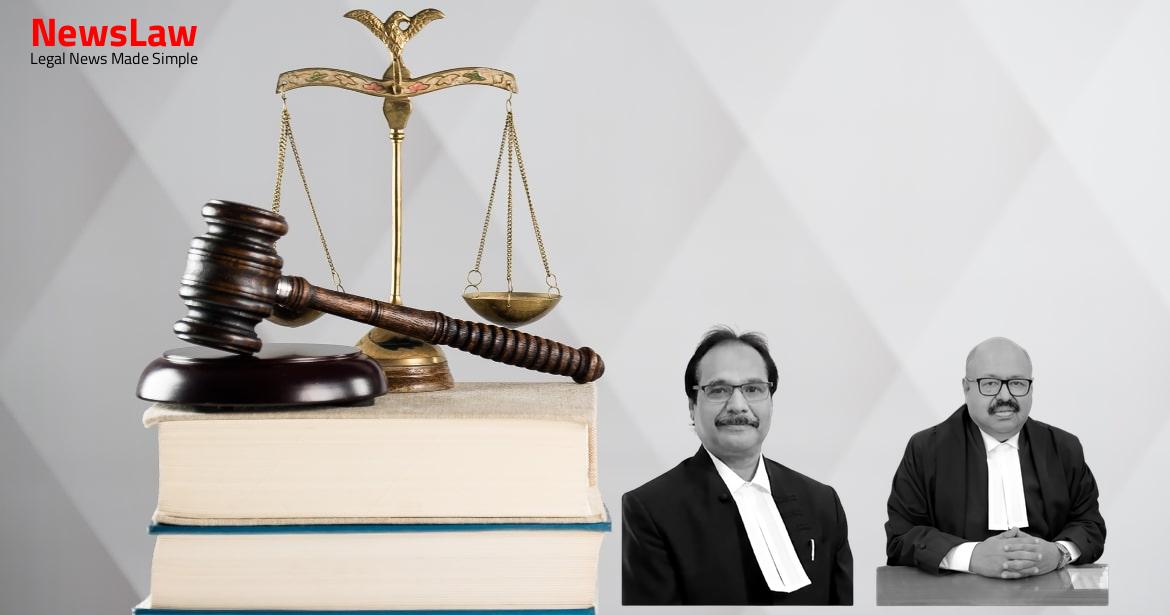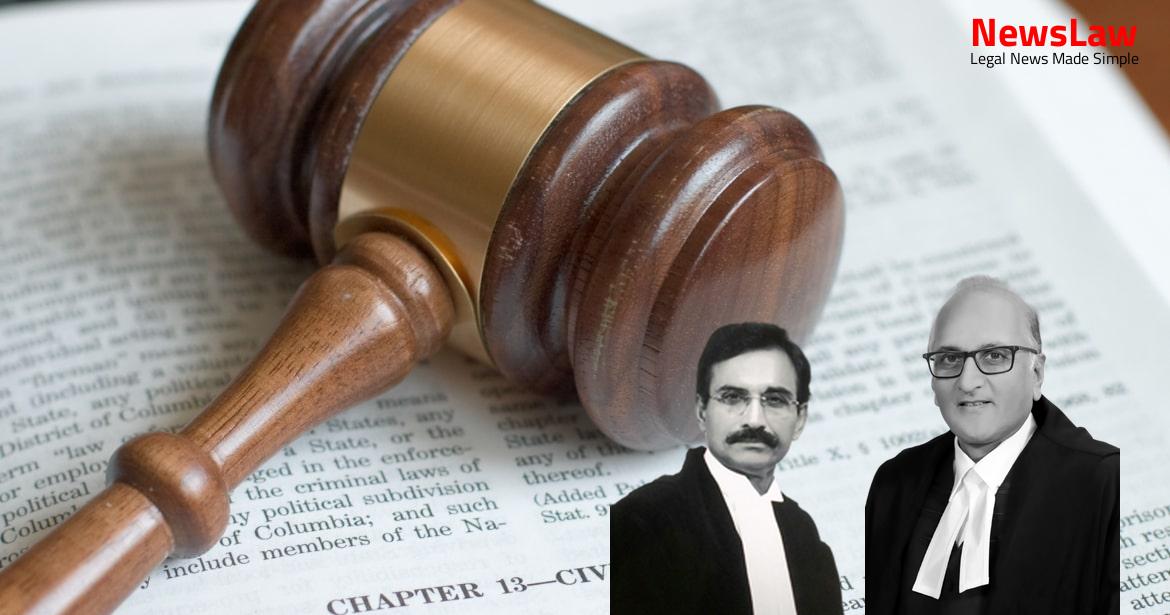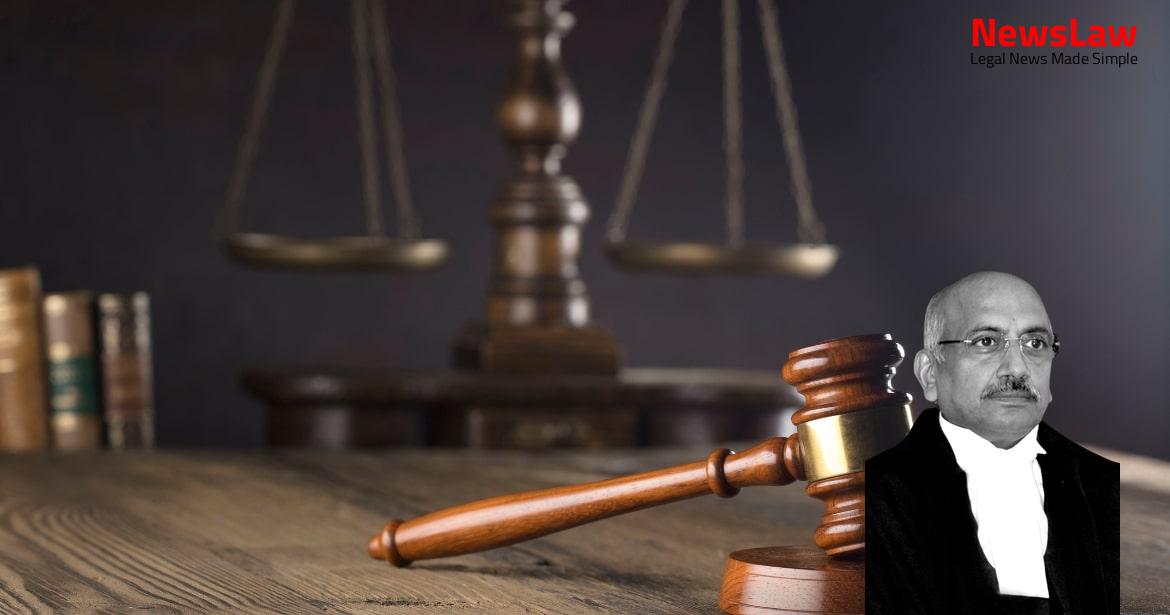Recommendations on Family Pension (Recommendation Nos. Recommendations on Additional Quantum of Pension/Family Pension (Recommendation Nos. To this end, at the instance of the All India Judges Association, this Court, in 1993 found the need to state that there must be a Judicial Pay Commission, separate and independent from the Executive in order to ensure that the system of checks and balances are in place, and the Judiciary has a say in their pay and service conditions. Within the next few years, the Central Government appointed the 6 Central Pay Commission, and the Commission made its recommendations which were accepted from 01.01.2006. The One-Person Commission once again submitted a report, which was accepted by this Court by Order dated 20.04.2010. Pursuant to the order of this Hon’ble Court, the Government of India, by its Resolution dated 10.11.2017, constituted the Second National Judicial Pay Commission (“Commission/SNJPC”). The interim relief, if recommended, shall have to be fully adjusted against and included in the package which may become admissible to the judicial officers on the final recommendations of the Commission. A perusal of the Report indicates that the Commission has analyzed the representations from various sources and periodically consulted with several experts while preparing working sheets and calculations.
Also Read: https://newslaw.in/supreme-court/release-of-petitioner-based-on-juvenility-plea/
Considering that the judicial officers were without updated/upgraded pay, this Court, by order dated 27.03.2018, directed the States and the Union of India to implement the recommendations of the Commission with regard to interim relief. The Amicus Curiae, K Parameshwar placed the recommendations of the Commission and its reasoning before this Court. He stated that the judgments of the Court, thus far, have recognized the principle of independence of judiciary only in the context of the High Courts and the Supreme Court and submitted that this principle ought to equally apply to the District Judiciary.
Therefore, he submitted that the increase in pay of the High Court judges must equally reflect in the increase of pay of judicial officers of the District Judiciary. He also sought to support the recommendation of the Commission on additional quantum of pension to be given from the age of 75 years by contending that the same is not only reasonable but is also already given by a number of States from an even younger age. He was also supplemented by Amit Anand Tiwari, AAG for Tamil Nadu, Ms Pratishtha Vij, counsel for the State of Himachal Pradesh, Siddharth Dharmadhikari, Counsel for the State of Maharashtra, Nachiketa Joshi, Counsel for the State of Madhya Pradesh, Ajay Pal, Counsel for the State of Punjab, Madhumita Bhattacharjee, Counsel for the State of West Bengal, Shuvodeep Roy, Counsel for the State of Assam, Shailesh Madiyal, Counsel for the UT of Jammu and Kashmir, Pukhrambam Ramesh Kumar, Counsel for the State of Manipur, Deepanwita Priyanka, Counsel appearing on behalf of the State of Gujarat, B.K. As regards the recommendation on increment to be accrued for the purposes of pension to the judicial officer in spite of her retirement, they contended that since the applicable Rules in their State do not provide for such accrual for Government Employees, the same cannot be given to judicial officers.
The second principle is that the independence of the judiciary requires that pay of judicial officers must be stand-alone and not compared to that of staff of the political executive or the legislature. This Court in All India Judges Association (II) has noted the position of law and observed that uniform designations and hierarchy, with uniform service conditions are unavoidable necessary consequences. The further directions given, therefore, should not be looked upon as an encroachment on the powers of the executive and the legislature to determine the service conditions of the judiciary. Thus, there cannot be any objection that judicial officers receive pay which is not at par with executive staff. Union of India, (1993) 4 SCC 288 at para 10: “ It would be against the spirit of the Constitution to deny any role to the judiciary in that behalf, for theoretically it would not be impossible for the executive or the legislature to turn and twist the tail of the judiciary by using the said power.
A pay revision has been recommended in accordance with the law laid down by this Court and a report submitted by a Judicial Pay Commission after considering this very objection.
After going through the affidavits of the States and the Union, this Court on 27.07.2022 found that in contrast to the 7 Central Pay Commission, which was implemented from 01.01.2016, judicial officers have not received any similar benefit. This Court by Order dated 05.04.2023 dismissed the review petitions and found that the financial implications cannot be considered as excessive in view of the information given by the SNJPC. Secondly, the application of a multiplier/ factor less than 2.81 would result in a deviation from the principle adopted by SNJPC that the extent of increase of pay of judicial officers must be commensurate with the increase in the pay of High Court judges. Union of India this court rejected the comparison of service conditions of the judiciary with that of the administrative executive: “ 7.
The council of ministers or the political executive is different from the secretarial staff or the administrative executive which carries out the decisions of the political executive. The District Courts and courts forming a part of the district judiciary discharge a prominent role in preserving the rule of law. Union of India, 1993 4 SCC 441; Special Reference No 1 of 1998, In re, (1998) 7 SCC 739; Supreme Court Advocates-on-Record Assn. It is thus important to recognize that the District Judiciary is a vital part of the independent judicial system, which is, in turn, part of the Basic Structure of the Constitution. We have, therefore, no hesitation in holding that access to justice is indeed a facet of right to life guaranteed under Article 21 of the Constitution. Absence of any adjudicatory mechanism or the inadequacy of such mechanism, needless to say, is bound to prevent those looking for enforcement of their right to equality before laws and equal protection of the laws from seeking redress and thereby negate the guarantee of equality before laws or equal protection of laws and reduce it to a mere illusion.” The right of fair trial and access to justice, as contemplated by this Court, is not limited to the physical access to a Court. The essential function of the District Judiciary, as also the function of the High Courts and this Court is to administer justice impartially and independently. Given that in the hierarchy of the unified judicial system a Judge of the High Court is placed above a District Judge, it follows that a District Judge cannot have more pay more than a High Court judge. The legitimacy of the principle that the increase of pay of the judicial officers must be commensurate with the quantum of increase in the pay of High Court judges has been raised previously and stands judicially settled. 2 The new pay structure shall be as per the ‘Pay Matrix’ pattern on the model of VII CPC as against the ‘Master Pay Scale’ pattern so as to remove the anomalies and to rationalize the pay structure and to ensure due benefit to the judicial officers of all cadres within the framework of established principles 44.3 The categorization of the Judicial officers shall be based on their status in the functional hierarchy reflected in horizontal range in Table-I below para 13.1 of the Report 44.4, 44.5 The initial pay for each rank of officer is about 2.81 times the existing entry pay of each rank except J-6 and J-7, which is in the same proportion as that of the High Court Judge. 8
In the Pay Matrix pattern, there shall be now 37 stages instead of 44 44.9 The fitment/migration of the existing officers shall be as reflected in Table II at para 13.3, p.73 44.10 The procedure for migration/fitment of the serving Judicial officers and also the procedure for fixation of pay on promotion shall be as explained in paras 13.5 and 13.8.
The Hon’ble Supreme Court may issue directions that the benefit of revised DA in conformity with the orders issued by the Central Government from time to time shall be paid to the Judicial officers without delay, and in any case, not later than 3 months from the date of issuance of the order by the Central Government. 44.15(ii) If for any reason, delay in grant of ACP goes beyond one year, one additional increment for every year delay shall be granted subject to adjustment while drawing the arrears on grant of ACP. 18 The Judges of the Family Courts in Maharashtra who belong to a separate cadre have to be extended the benefit of pay of District Judge (Selection Grade) and District Judge (Super Time Scale) in the same ratio as prescribed for regular District Judges. The first is Order dated 27.07.2022, the second is Order dated 18.01.2023 and the final one is Order dated 05.04.2023. Individual recommendations made by the SNJPC on pay are considered hereinbelow. A thorough examination by the SNJPC revealed that these designations have not been adopted in few states. It was stated by the Commission that the State of Kerala still designates its judges as Munsiff and ‘ Subordinate Judge’. Union of India, (1993) 4 SCC 288 at para 19 and 20. Union of India, (1993) 4 SCC 288 at para 19 and 20.
Also Read: https://newslaw.in/supreme-court/legal-analysis-of-circumstantial-evidence-in-a-murder-case/
The SNJPC has recommended that the pay matrix model, which was adopted by the 7 Central Pay Commission be adopted for Judicial Officers as well.
At the cost of repetition, it may be stated that this Court has already rejected the objections of the States and the Union and consequently accepted the multiplier/Index of Rationalization of 2.81 in Order dated 27.07.2022 and Order dated 05.04.2023. As stated above, the principled basis of the acceptance is that the pay of judicial officers in the District Judiciary can only be based on the pay of Judges of the High Court. The first view, which was taken by the High Courts of Madhya Pradesh, Gujarat and Allahabad, is that when the increment becomes due the next day after retirement, the employee ought not to be denied the benefit of the increment for the purposes of pay. This Court approved the judgment of the High Court of Allahabad’s view in Nand Vijay Singh v. Fitment and Migration from Master Pay Scale to Pay Matrix System (Recommendations 44.8, 44.9, 44.10) 56. The Court notes that the Commission has recommended the formula and method to ensure that the migration from the master pay scale to the pay matrix system is smooth. Where there is an identical figure available in Table-I at the corresponding stage of the relevant level, the new revised pay shall be fixed at that stage. In order to make matters clear, the Commission has also given illustrations so as to simplify the fitment/migration formula for the relevant authorities. The 7 Central Pay Commission came into force from 01.01.2016. However, the last pay revision of the judicial officers was with effect from 01.01.2006.
While the Commission suggested that the arrears of pay be given during the calendar year 2020, this Court after considering the submissions of the Union and the State that the payment of arrears at one go may not be possible and by Order dated 27.07.2022 directed that the payments be made in three separate installments. Considering the grievances of the States, by Order dated 18.01.2023, this Court directed: “All the States/Union Territories which have made payment of only the first installment or the first two installments and the States and Union Territories which have come up with applications for extension of time, are permitted to make payment of arrears, at least within the time indicated in this order.
The recommendation of the SNJPC is that Dearness Allowance may be paid at the rate fixed by the Central Government. At present, a Civil Judge (Jr Div) would be entitled to the first ACP only after completing 5 years of service.
Div.) have only two promotional avenues available to them, i.e., Civil Judge (Sr. Union of India, relaxed the aforesaid conditions only for the Delhi Higher Judicial Services in so far as it permits candidates with experience of 10 years to appear for the Limited Competitive Examination for becoming District Judges. Union of India (2010) 15 SCC 170 (para 7-8). It is thus directed that the grant of 1 ACP to Civil Judge (Jr Div) be given on the basis of relaxed norms which may be devised by the High Courts, with reference to the suggestions of the Commission. Separately, to avoid this delay in the future, the Commission suggested that the process of grant of ACP should be initiated 3 months in advance from the date on which the judicial officers will be completing 5/10 years and the financial benefits should be paid to the judicial officer within a period of 6 months after the judicial officer steps into the 6 / 11 year of Service. The reasoning of the Commission is that due to the limited percentage of District Judge (Super Time Scale) and District Judge (Selection Grade), many judges from larger states are unable to reach higher posts before retirement even though they have spent considerable time in the District Judge Cadre.
Essentially, this would entail that the District Judges at Entry level shall be 50%, selection grade 35% and Super Time Scale – 15% of the total cadre strength of District Judges. Though Labour Courts and Industrial Tribunals, both statutory courts created under the Industrial Disputes Act, 1947 are not presided over by judicial officers, they are entitled to equal pay as district judges based on the principle of equal pay for equal work. The recommendation of the Commission is that the Judges of the Family Court also be entitled to the benefit of Selection Grade and Super Time Scale as well. Minimum Remuneration to Special Judicial Magistrates (Second Class) and Special Metropolitan Magistrates (Recommendation 44. The Commission noted that in some states they are paid very meagre remuneration and consequently has recommended a minimum pay of Rs. As such, their financial independence is as much a part of judicial independence as is for regular Magistrates. Thus, the recommendation of the Commission modified by fixing the remuneration at Rs. Accepted 44.6 The new Mean Pay percentage vis-a-vis the salary of High Court Judge in relation to each cadre and grade as per p.182 of the Report Accepted 44.7 The annual increment shall be @3% cumulative, meaning thereby that the increment @3% has to be calculated on the previous years basic pay instead of fixed amount increments recommended by FNJPC and JPC.
Accepted 44.8 In the Pay Matrix pattern, there shall be now 37 stages instead of 44 Accepted 44.9 The fitment/migration of the existing officers shall be as reflected in Table II at para 13.3, p.73 Accepted – to be read with Corrigendum dated March 2021 submitted by the SNJPC 34 44.10 The procedure for migration/fitment of the serving Judicial officers and also the procedure for fixation of pay on promotion shall be explained in paras 13.5 and 13.8. The Hon’ble Supreme Court may issue directions that the benefit of revised DA in conformity with the orders issued by the Central Government from time to time shall be paid to the Judicial officers without delay, and in any case, not later than 3 months from the date of issuance of the order by the Central Government. It will be effective from 01.01.2020 Accepted 44.16(ii)
The upgradation benefit shall be given to the District Judges by applying the principle of seniority-cum-merit instead of merit-cum- seniority.
18 The Judges of the Family Courts in Maharashtra who belong to a separate cadre have to be extended the benefit of pay of District Judge (Selection Grade) and District Judge (Super Time Scale) in the same ratio as prescribed for regular District Judges. Accepted 44.19 Special Judicial Magistrates (Second Class)/Special Metropolitan Magistrates (dealing with petty criminal cases) shall get minimum remuneration of Rs.30,000/- per month in addition to conveyance allowance of Rs.5,000/- per month w.e.f. Recommendation 39.1 No change in pension for those retiring after 01.01.2016- the pension/family pension shall be @50% / 30% of the last drawn pay at the time of retirement 39.2 Revised pension of retired judicial officers would be 50% of last drawn 37 pay 39.3 Formulations as given in Report to apply for pension revision: (i) Multiplier factor of 2.81 to be applicable for pension; or (ii) Pensioners to be fitted appropriately in the fitment table (Table II, para 13.3, Ch.
Family Pension 4.1 For family pensioners, no change is suggested in the existing percentage of family pension, that is, it shall be @30% of last drawn pay at the time of retirement of the Judicial officer 4.2 Family Pension @30% shall be paid to eligible family member(s) as given in Rule 54 CCS (Pension) Rules 1972 at par with the spouse, after the death of the spouse. Additional Quantum of Pension/Family Pension 21.1 Additional quantum of family pension on completion of age of and at the rates specified as per Table in p.49, Vol.
Assistance to Pensioners/Family Pensioners 11.1 Special attention shall be bestowed to them by rendering due assistance for processing the medical bills of the pensioners/family pensioners who are too old, infirm or differently abled or undergoing in-patient treatment for serious ailment 11.2 District Judge shall nominate a Nodal Officer for liasoning work, if 39 required, in emergency in facilitating admission in the hospital and getting the medical bills of the pensioners/family pensioners cleared promptly. National Pension Scheme 31.1 The National Pension System (NPS)/Defined Contributory Pension Scheme shall not be applicable to all judicial officers. 4
Case Title: ALL INDIA JUDGES ASSOCIATION Vs. UNION OF INDIA (2024 INSC 26)
Case Number: W.P.(C) No.-000643-000643 / 2015



